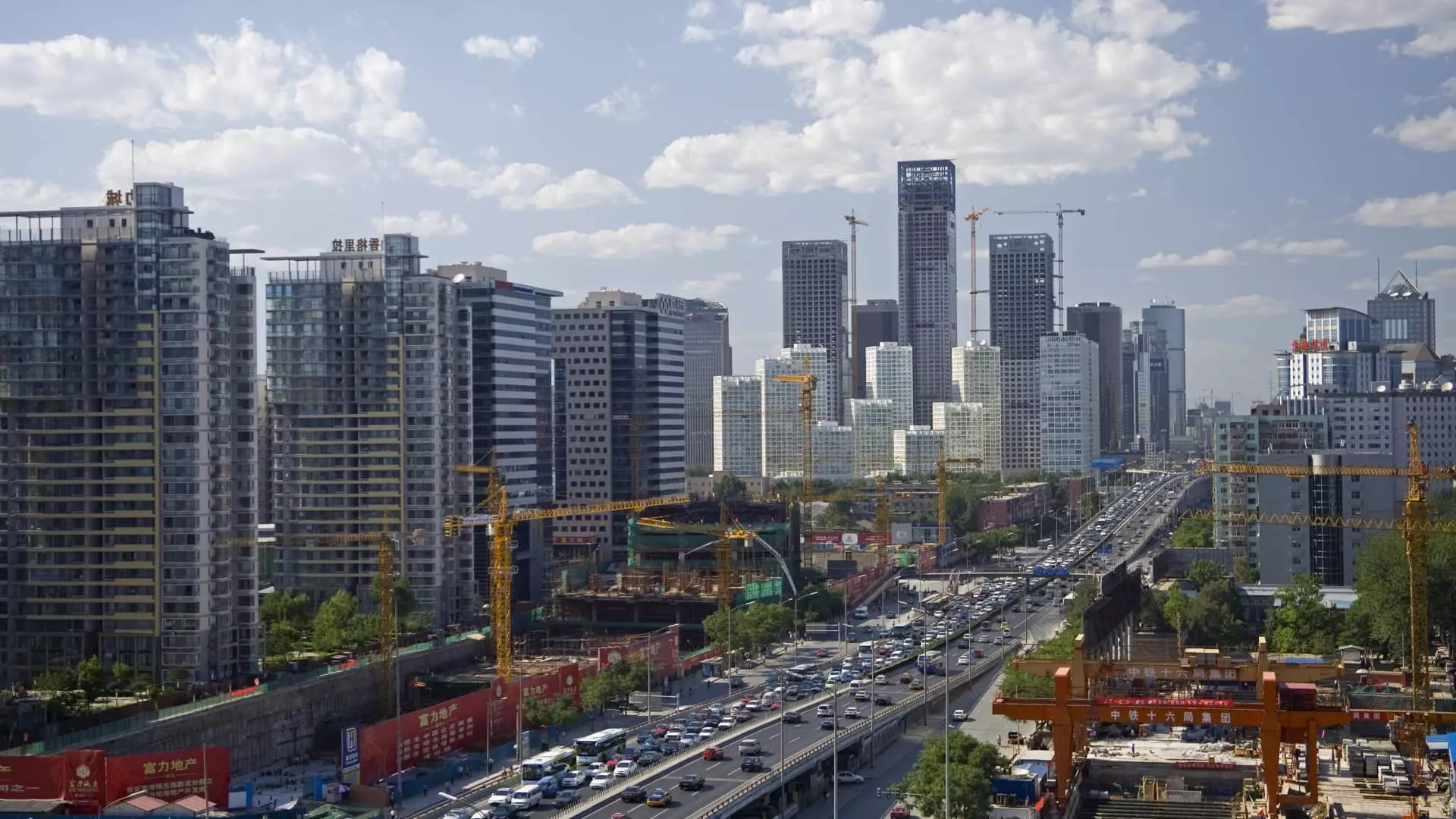China’s economy has recently showcased a surprising vitality, expanding by 5.4% in the first quarter of the year—an achievement that defied the skeptical expectations of analysts who anticipated a more modest 5.1% growth. This robust performance, buoyed by a driver of policy stimulus, falsely paints an optimistic picture of a nation on the mend. While retail sales soared by an impressive 5.9% in March, unmistakably surpassing predictions, these figures mask deeper vulnerabilities that could unleash a torrent of economic challenges as the year progresses.
Despite this apparent momentum, the looming threats from escalating U.S. trade tensions are raising alarms. The tit-for-tat trade war, which has seen U.S. tariffs on Chinese goods skyrocket to a staggering 145%, casts a long shadow over any claims of sustainable growth. Investment banks are beginning to revise their annual growth projections downward, predicting a more subdued reality that starkly contrasts with the celebratory headlines emanating from China’s National Statistics Bureau.
Complex Challenges Amidst Recovery
Economists, including Zhiwei Zhang from Pinpoint Asset Management, express deep concern over inflationary pressures and weakened export markets. High-frequency indicators continue to suggest that the export landscape is rapidly deteriorating. As the second quarter approaches, many analysts foresee a robust decline in exports, as the burden of increased tariffs weighs heavily on trade dynamics. This mounting uncertainty makes the challenge of achieving an ambitious annual growth target of “around 5%” seem daunting, if not impossible.
China’s reliance on fixed asset investments, particularly in real estate, is also troubling. While overall fixed asset investment saw a commendable increase of 4.2%, the crumbling real estate sector, which plummeted by 9.9% year-on-year, signals substantial underlying weaknesses. The growth in infrastructure and manufacturing investments fails to quell my concerns. Economic vitality cannot thrive on isolated sectors; sustainable growth must be holistic and relate to a broader consumption base—a trait that China seems to lack.
Unemployment: The Untold Story
Another alarming aspect of China’s economic performance is the urban unemployment rate, which slipped to 5.2% after reaching a two-year high of 5.4%. While it’s easy to celebrate the reduction, we must delve deeper into what this figure represents. The improving unemployment numbers might inadvertently reflect a troubling narrative: the labor market’s inability to capture the diverse and evolving needs of its workforce.
What does it mean when the report suggests innovation is “playing an increasingly leading role”? While it’s uplifting to see Chinese startups, like DeepSeek, entering the AI landscape and promising cutting-edge technologies that rival their American counterparts, we must not be overly optimistic. Innovation alone cannot substitute for structural integrity within the economy. The pervasive sentiment of a lacking domestic demand continues to loom large, making sustained recovery a tall order.
The Perils of Over-Reliance on External Markets
China’s leadership must recognize the perilous path of depending too heavily on exports and foreign investments. The statistical bureau’s statement advocating for a “more proactive and effective” economic policy echoes a growing realization that a shift is essential. The current approach, heavily reliant on external markets, exposes the economy to unpredictable external shocks.
Morgan Stanley’s forecast projecting impending economic deterioration signals the urgency for a recalibration of strategy. Prominent economists anticipate that without a fierce internal stimulus—including potential monetary easing measures and expansive fiscal policies—the efficacy of the government’s growth strategies is highly questionable. In essence, the need to pivot to a more consumption-driven economy has never been more critical.
A Call for Comprehensive Policy Shifts
There is a clarion call for Chinese officials to craft policies that strengthen domestic consumption, stabilize housing markets, and lessen the economy’s vulnerability to international vagaries. With UBS projecting a dismal 3.4% growth as the tariffs continue to inhibit exports, it’s imperative for the Chinese government to adopt more aggressive fiscal measures. Such actions will not only serve to cushion the immediate impacts of trade wars but also lay a foundation for a more durable economic paradigm.
In an era where geopolitical landscapes are rapidly shifting, the notion of innovation must be aligned with robust economic principles that promote resilience and adaptability. A successful and sustainable Chinese economy requires not just a robust output but a holistic one centered on improving the living conditions of its people. Without addressing these multifaceted challenges, the rosy figures may soon dissolve into dismal realities—rendering growth mere smoke and mirrors.

